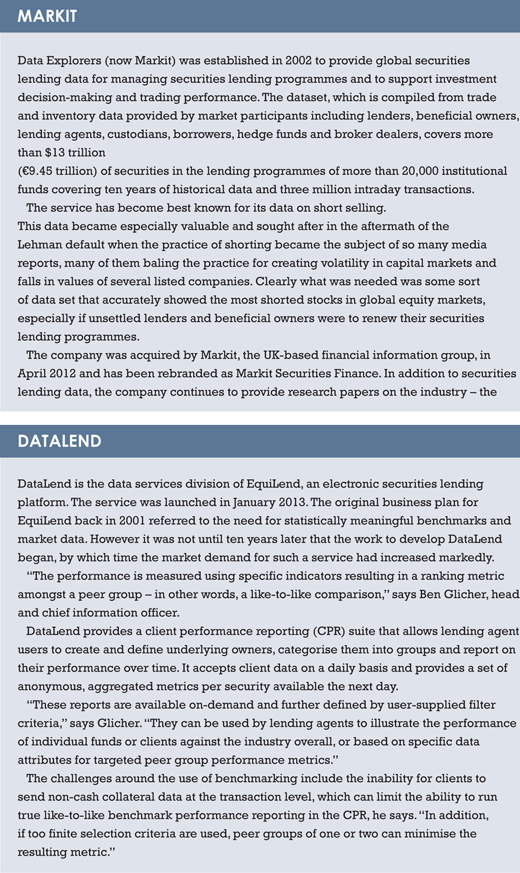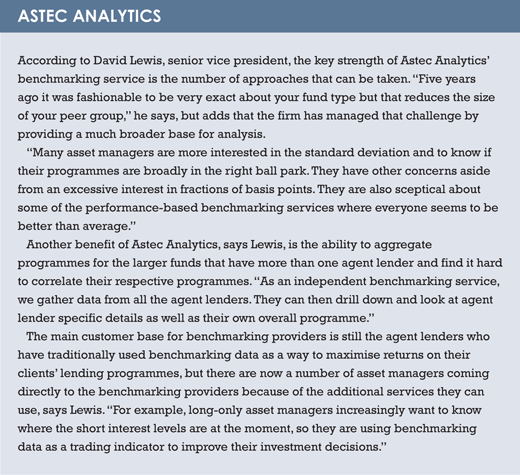Benchmarking is an increasingly important service for asset managers and asset owners involved in the securities lending market. Nicholas Pratt examines the offerings of three main providers.
The sea-change in attitude since the Lehman Brothers collapse in 2008 is the most obvious explanation for the growing amount of interest from asset managers in benchmarking their securities lending programmes.
 Prior to this calamitous event, securities lending was seen as a back-office activity that brought in a steady source of revenue without warranting much attention from the asset owners. However, asset managers are now much more cognisant of the risk factors in a securities lending programme and are much more diligent in managing this risk.
Prior to this calamitous event, securities lending was seen as a back-office activity that brought in a steady source of revenue without warranting much attention from the asset owners. However, asset managers are now much more cognisant of the risk factors in a securities lending programme and are much more diligent in managing this risk.
“The amount of time that asset managers spend looking at their securities lending programmes has increased massively since the Lehman default,” says David Lewis, senior vice president at SunGard’s Astec Analytics.
The programmes are more customised than the homogenous and vanilla approach taken in the pre-Lehman days, he adds.
Now asset managers will define more closely what they are willing to lend, who they are willing to lend it to and what collateral they want in return. And this is where benchmarking can add real value, Lewis says, in the understanding of how lenders’ criteria affect the returns their programmes generate.
Lewis says that for lenders, the revenue achieved can be affected by how flexible they are in their lending criteria. So benchmarking helps them to understand the dynamic between the revenue they have and how the lending criteria affects that revenue. “It is the old maxim – if you can’t measure it, you can’t manage it.”
There are some basic metrics such as the total return-to-lendable ratio which can then be calculated against a manager’s peer group – either by fund type, market, geography, asset class and so on. Managers can then assess where their programme fits in relation to their peers’ programmes and in risk and revenue terms.
There are two basic strategies for most lenders – an intrinsic value programme, where asset owners will only lend a few items of high value assets in large demand but in low volume, or a general collateral programme of high volume, lower value assets.
“Both strategies may earn the same revenue but they are quite different approaches and one may suit your programme’s risk appetite and asset profile better than the other,” says Lewis.
“You want your lending programme to behave in line with the style of the underlying fund and it is on that basis that an asset manager should assess their programme.”
Benchmarking has been used to great effect by agent lenders as a pricing tool in order to know what fees to charge when lending their clients assets. Now that same data
is appearing on the desktops of fund managers and, in the boxes above, Funds Europe talks to three of the main providers.

©2013 funds europe





